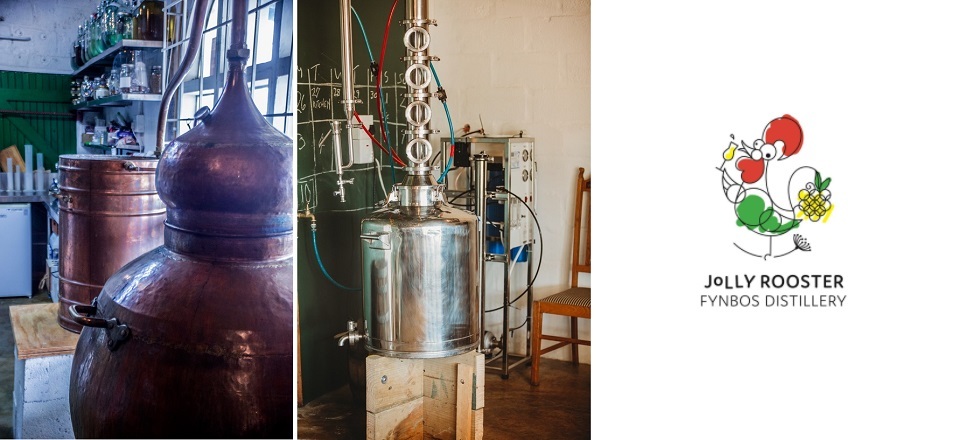Pot Stills vs. Column Stills
At The Jolly Rooster @ Fynbos Distillery we use two different stills. 1x 100L Column Still & 1x 200L Pot Still. See below the difference between the two.
The obvious starting point in any discussion of whiskey distillation is pot stills versus column stills. A pot still at its simplest consists of a large kettle or pot which is heated from the bottom, boiling off the alcohol and allowing the vapors to be sent to a condenser and separated.
With column distillation, the mash enters near the top of the still and begins flowing downward. This brings it closer to the heating source, and once it’s heated enough to evaporate, the vapor rises up through a series of partitions known as plates or stripping plates. At each plate along the way, the vapor ends up leaving behind some of its heavier compounds and cogeners.
The most important point of difference between pot stills and column stills is that pot stills operate on a batch by batch basis, while column stills may be operated continuously. This is why they’re sometimes known as continuous stills. Further, column stills that are rigged to do so can produce spirit over 95% ABV, nearly pure ethanol, whereas pot stills cannot achieve such returns.
It should also be noted that while most pot stills are made entirely from copper, in some instances, column stills will be part stainless steel. Here, only the upper portion of the still which actually comes into contact with the alcohol vapor will be copper, which is important as copper is utilized to help rid the spirit of sulfur.
Many of America’s craft distilleries today use what’s essentially a hybrid pot still. It has a pot still at its base but also one or more columns, allowing a distillery the flexibility to produce different types of spirits and to control the specifics of distillation along the way.













.jpg?width=431&height=242)








.jpg?width=250&height=182)












